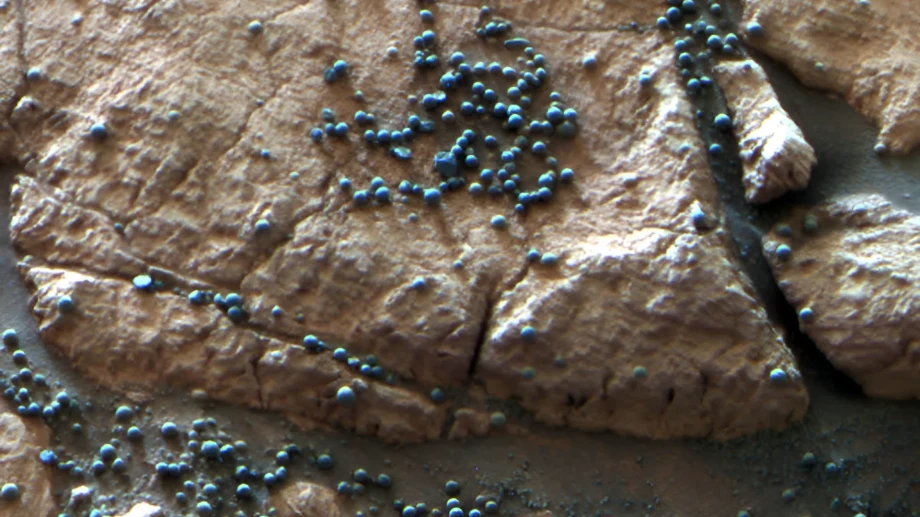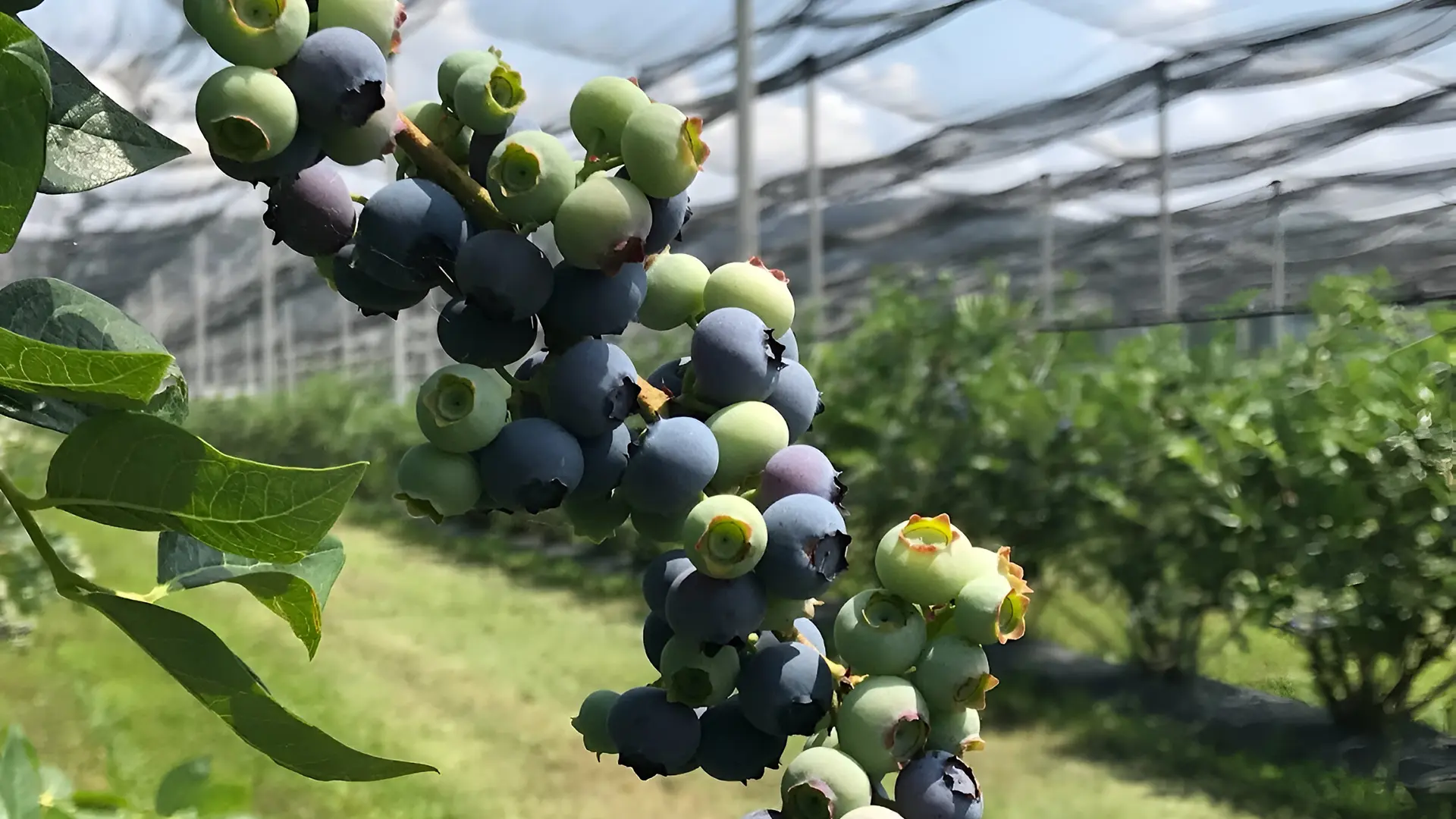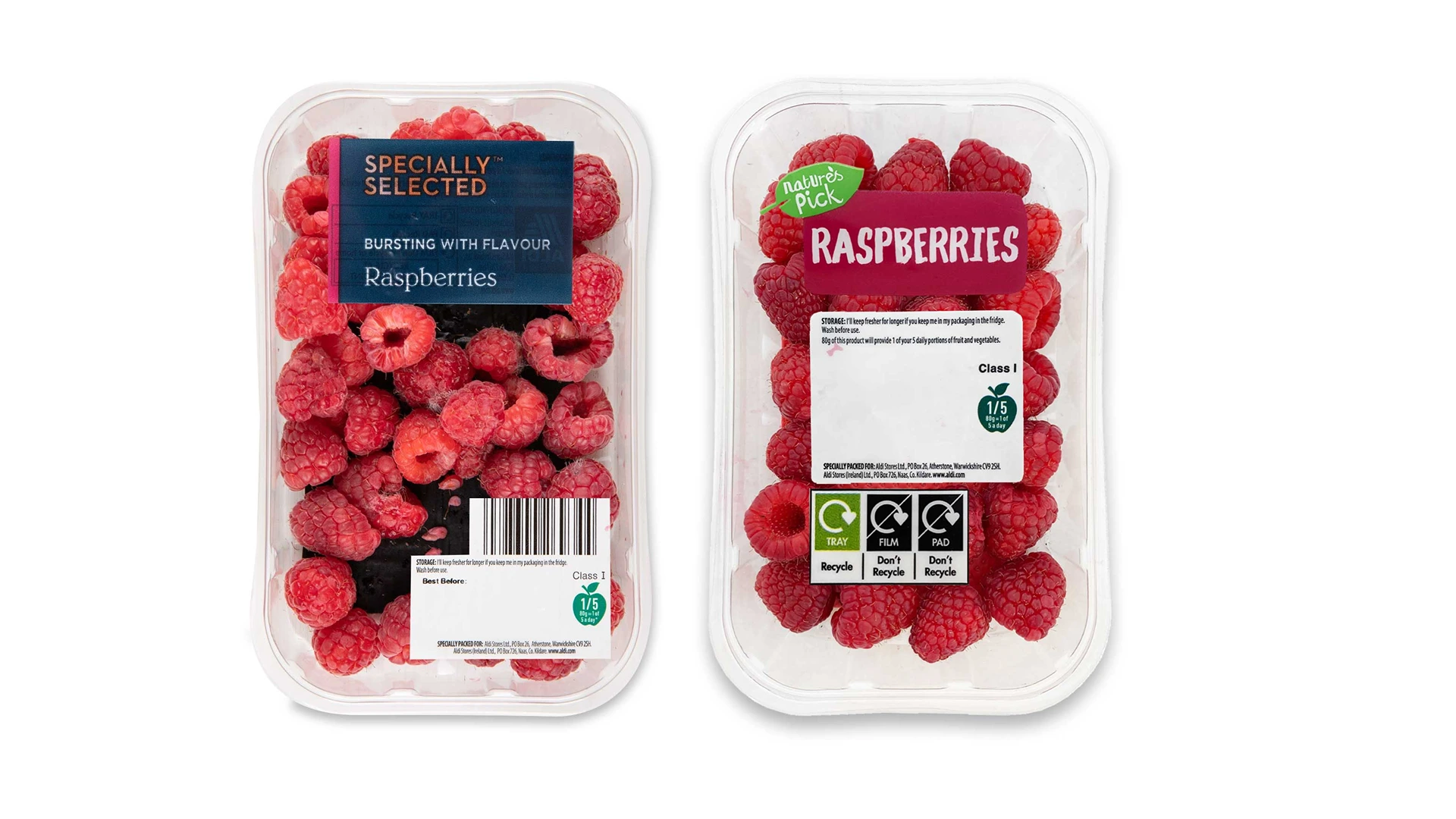For those with a passion for the extraordinary and an interest in all things blueberry, NASA has made a simply fascinating discovery. In the vast panorama of the Martian landscape, one peculiar sight is indeed to be found: tiny blue spherical formations scattered among the rust-coloured soil.
These are the Martian blueberries, fascinating geological formations discovered by NASA's Martian Exploration Rover, Opportunity, on the day it landed at Meridiani Planum.
The story begins on 25 January 2004, when Opportunity made its historic landing on the Martian surface. As the rover began its mission to explore the ancient terrain of Mars, scientists were surprised by an unexpected sight: countless small round formations resembling blueberries scattered across the landscape.
These were unlike anything seen on another planet, arousing both excitement and curiosity among researchers and the public.
But what exactly are these enigmatic Martian blueberries? To understand their origin, we need to delve into the geological processes at work on the Red Planet. The prevailing theory suggests that these spherules, ranging in size from a few millimetres to a centimetre in diameter, are concretions formed by the accumulation of minerals in sediments that have been soaked in water for millions of years.
Similar formations are also found on Earth, particularly in sedimentary rocks, where mineral-rich fluids seep through porous materials and gradually precipitate to form rounded nodules.
 Foto: NASA
Foto: NASA
On Mars, the presence of these blueberries suggested a past presence of water - a revelation that has profoundly influenced our understanding of the planet's ancient history. It has provided compelling evidence that liquid water once flowed on the Martian surface, offering tantalizing clues in the ongoing quest to unravel the mysteries of Mars' past habitability.
Moreover, the composition of these Martian blueberries proved equally intriguing. Analysis conducted by Opportunity's instruments revealed that they were mainly composed of haematite, an iron oxide mineral often associated with the presence of water. This discovery further strengthened the hypothesis that Mars was once a much wetter and potentially habitable world billions of years ago.
In the years since their discovery, Martian blueberries have continued to capture the imagination of scientists and the public. They serve as tangible reminders of the profound geological processes taking place on our neighbouring planet and the fascinating possibilities of extraterrestrial exploration.
As we contemplate the Martian blueberries, we are reminded of the endless wonders waiting to be discovered in the depths of space. Each tiny spherule tells a story of ancient waters and the relentless quest for knowledge that drives humanity's cosmic exploration.
So, the next time you eat a juicy blueberry here on Earth, take a moment to reflect on its extraterrestrial cousins, scattered across the red sands of Mars, waiting to reveal their secrets to those brave enough to seek them out.













